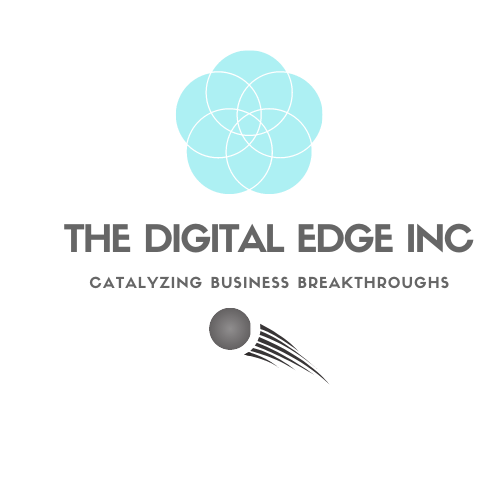Digital Transformation: The Compassionate Organization's Guide to Greater Impact in 2025

Digital transformation empowers mission-driven organizations to amplify their mission and create a greater impact. By adopting a nonprofit digital strategy, you can connect with more people, streamline operations, and deliver meaningful change. As the world becomes increasingly digital, embracing these strategies is essential for staying ahead. By 2025, organizations that integrate digital transformation into their approach will lead the way in driving compassion and positive change. Aligning technology with your mission-driven values ensures that every step you take reflects your dedication to making the world a better place.
Key Takeaways
Digital transformation helps organizations reach more people and make a bigger difference. Use technology to strengthen your mission.
A clear digital plan is very important. Without it, organizations may struggle and waste time. Create a plan that matches your mission with technology.
Use data to track your success. Analytics can show how people interact and help improve your strategies. This keeps your work focused on your mission.
Build a culture that supports new ideas to handle change. Teach flexibility and include your team in the process to gain trust and teamwork.
Begin your digital transformation by reviewing where you are now. Find problems, set clear goals, and start small projects to keep moving forward.
Why Compassionate Organizations Need Digital Transformation

The Evolving Role of Compassion in the Digital Age
Compassion has taken on a new dimension in the digital age. Technology now enables you to connect with others in ways that were once unimaginable. Virtual reality, for example, allows people to step into someone else’s shoes, fostering empathy and understanding. These tools don’t just enhance interactions; they redefine how you can inspire compassion on a global scale. By embracing compassionate technologies, you can create experiences that promote prosocial behavior and deepen emotional connections. This evolution highlights the potential of digital tools to amplify your mission and bring people closer to your cause.
Challenges Without a Digital Strategy
Without a clear digital strategy, your organization risks falling behind. Many mission-driven organizations struggle to implement new systems due to a lack of planning or technical expertise. Resistance to change can also slow progress, making it harder to adapt to new technologies. A siloed structure within your organization may lead to poor communication and inefficiencies. These challenges can prevent you from achieving your goals and limit your ability to make a meaningful impact. To stay relevant and effective, you need a roadmap that aligns technology with your mission and values.
Opportunities for Mission-Driven Organizations to Scale Impact
Digital transformation opens doors to incredible opportunities for mission-driven organizations. You can scale your goals from helping hundreds to reaching thousands or even millions. Online fundraising platforms and crowdfunding apps allow you to expand your supporter base. Tools like board management software help leaders achieve strategic objectives. Imagine using AI for personalized engagement or leveraging cryptocurrency for new fundraising streams. Virtual collaboration tools eliminate location barriers, enabling your team to work seamlessly across the globe. By adopting these technologies, you can innovate, grow, and create a lasting impact.
Key Pillars of a Successful Digital Transformation
Technology Adoption for Mission-Driven Organizations
Leveraging cloud-based tools for efficiency
Cloud computing has revolutionized how mission-driven organizations operate. By adopting cloud-based tools, you can securely store data, collaborate in real-time, and access resources from anywhere. These tools enhance operational flexibility and reduce the need for costly infrastructure. For example, cloud platforms allow your team to share documents seamlessly, ensuring everyone stays aligned with your mission. This efficiency frees up time and resources, enabling you to focus on creating meaningful change.
Automating workflows to save time and resources
Automation simplifies repetitive tasks, allowing you to allocate more energy to your mission. Tools powered by artificial intelligence can streamline operations like donor management, email campaigns, and volunteer coordination. By automating these workflows, you reduce human error and improve productivity. Imagine using automation to send personalized thank-you messages to donors or schedule social media posts. These small changes can have a big impact, helping you connect with supporters while saving valuable time.
Data-Driven Decision-Making with Compassion
Using data to measure and enhance impact
Data is a powerful tool for understanding your organization’s effectiveness. By analyzing metrics like engagement rates and program outcomes, you can identify what works and what needs improvement. For instance, tracking donor behavior helps you tailor campaigns to their preferences. This approach ensures that every decision you make aligns with your mission and maximizes your impact. Compassion remains at the core of this process, as you use data to better serve your community.
Aligning insights with organizational goals
Data insights should always reflect your organization’s values. Start by setting clear goals that align with your mission. Then, use analytics to measure progress and adjust strategies as needed. For example, if your goal is to increase volunteer participation, analyze trends to identify barriers and opportunities. This alignment ensures that your digital transformation stays focused on creating positive change while staying true to your purpose.
Human-Centered Design in Digital Transformation
Designing accessible and inclusive digital tools
The human element is essential in any successful digital transformation. When designing digital tools, prioritize accessibility and inclusivity. Ensure your website is mobile-friendly and compliant with accessibility standards. This approach allows all users, regardless of ability, to engage with your mission. For example, adding alt text to images and providing captions for videos can make your content more inclusive. These small adjustments demonstrate your commitment to compassion and equity.
Prioritizing user empathy in digital solutions
Empathy is the foundation of human-centered design. By understanding your users’ needs and pain points, you can create solutions that genuinely help them. For instance, segmenting users by roles or behaviors allows you to customize their experience. Journey mapping can also reveal how users interact with your organization, helping you identify areas for improvement. This focus on the human element ensures that your digital tools serve people, not just processes.
How to Begin Your Digital Transformation Journey
Assessing Your Organization’s Digital Readiness
Conducting a digital maturity assessment
Understanding where your organization stands digitally is the first step toward meaningful transformation. Start by documenting your current state. Identify the tools, processes, and systems you already use. Engage your team to uncover challenges and goals. Ask key staff members what problems they aim to solve and which key performance indicators (KPIs) matter most to them. This collaborative approach ensures alignment with your mission and addresses the unique needs of each department. Once you’ve gathered this information, envision your desired future state. What does success look like? Use this vision to develop a roadmap that bridges the gap between where you are and where you want to be.
Identifying gaps in technology and skills
Many organizations face challenges due to a lack of advanced digital skills. While basic digital literacy may be common, expertise in areas like cybersecurity, data analytics, and emerging technologies is often missing. This gap can lead to inefficiencies and longer project timelines. To address this, assess your team’s current skill set and identify areas for improvement. Consider investing in targeted training programs to build the expertise your organization needs. Remember, a well-prepared team is essential for a successful transformation.
Setting Goals Aligned with Compassion and Mission
Defining measurable outcomes for success
Clear goals keep your transformation efforts focused. Start by establishing a "North Star" for your organization—an overarching objective that aligns with your mission. Break this down into measurable outcomes. For example, if your goal is to increase donor engagement, set specific targets like a 20% rise in recurring donations within a year. These metrics provide a clear way to track progress and celebrate milestones along the way.
Prioritizing initiatives based on impact
Not all initiatives carry the same weight. Focus on those that align most closely with your mission and deliver the greatest impact. Involve your team in this process to ensure everyone feels connected to the organization’s goals. By prioritizing initiatives thoughtfully, you can allocate resources effectively and maintain momentum.
Building a Roadmap for Patient and Sustainable Change
Creating a phased implementation plan
A successful digital transformation doesn’t happen overnight. Break your journey into manageable phases. Start with small, high-impact projects that build confidence and demonstrate value. For example, you might begin by automating donor communications before tackling larger system overhauls. Define clear objectives, timelines, and milestones for each phase. This approach ensures steady progress without overwhelming your team.
Engaging stakeholders in the transformation process
Stakeholder engagement is key to long-term success. Begin by identifying who your stakeholders are and how they’ll be affected by the transformation. Involve them early in the process, from planning to implementation. Regular communication is essential—share updates, gather feedback, and celebrate wins together. Provide training and support to help stakeholders adapt to new tools and processes. Recognizing their contributions fosters trust and ensures everyone feels invested in the journey.
Overcoming Challenges in Digital Transformation
Addressing Resistance to Change with Compassion
Building a culture of innovation and adaptability
Resistance to change is natural, but you can overcome it by fostering a culture of innovation. Start by promoting adaptability as a core value within your organization. Encourage your team to embrace new ideas and view challenges as opportunities for growth. Identify change champions who can inspire others and spread positive energy. When leaders actively participate in the process, they set an example that motivates everyone to move forward. A thorough change management strategy increases your chances of success sixfold. By prioritizing compassion and understanding, you can create an environment where transformation feels less daunting and more empowering.
Communicating the benefits of transformation
Clear communication is essential during times of change. Explain why digital transformation is necessary and how it aligns with your mission. Highlight the personal benefits for your team, such as skill development and reduced workloads. Engage employees in the planning process to foster a sense of ownership. Offer training programs to equip them with the skills they need to succeed. Transparency about the process helps alleviate fears and builds trust. When everyone understands the "why" behind the change, they are more likely to support it wholeheartedly.
Managing Budget Constraints in Nonprofit Digital Strategy
Exploring cost-effective tools and solutions
Budget constraints can feel overwhelming, but cost-effective tools can help you achieve your goals. Social media platforms like Facebook and Instagram offer free access and extensive reach, making them ideal for patient engagement. Google Analytics provides valuable insights into your audience at no cost. Google for Nonprofits offers a suite of tools, including a $10,000 monthly grant for Google Ad Grants, enabling you to run impactful campaigns without straining your budget. These resources allow you to maximize your impact while staying financially responsible.
Securing funding through grants and partnerships
Grants and partnerships can provide the financial support you need for digital initiatives. Research organizations that align with your mission and apply for relevant grants. Build partnerships with businesses or other nonprofits that share your values. Collaborative efforts often lead to shared resources and reduced costs. Highlight the potential impact of your transformation to attract funders who are passionate about your cause. By leveraging these opportunities, you can secure the funding necessary to drive meaningful change.
Navigating Ethical Concerns in Digital Transformation
Ensuring data privacy and security
Protecting data privacy is crucial in any digital transformation. Implement robust cybersecurity measures to safeguard sensitive information. Obtain informed consent from users before collecting their data. Transparency about how you use this data builds trust and demonstrates your commitment to ethical practices. Regularly review your security protocols to ensure they remain effective. By prioritizing privacy, you can maintain the confidence of your supporters and stakeholders.
Balancing technology with human values
Technology should enhance, not replace, human values. Maintain open communication about tech changes to address concerns and fears. Show your team how these changes can benefit them personally, such as by improving patient engagement or streamlining workflows. Establish boundaries, like disconnecting after work hours, to support well-being. Ethical leadership plays a vital role in this balance. When leaders champion responsible practices, they inspire others to do the same. By keeping compassion at the heart of your transformation, you can ensure that technology serves humanity, not the other way around.
Case Studies of Successful Digital Transformation

Nonprofit Digital Strategy: Leveraging AI for Outreach
Artificial intelligence (AI) has become a game-changer for nonprofits looking to expand their outreach. By integrating AI into your strategy, you can connect with supporters in innovative ways and amplify your mission.
World Wildlife Fund uses AI-powered chatbots to engage website visitors and facilitate donations. These chatbots enhance user interaction while saving time for your team.
National Geographic Society employs AI for image recognition, making it easier to catalog and retrieve media assets for fundraising campaigns.
St. Jude Children’s Research Hospital analyzes donor data with AI to craft compelling patient stories. This approach has significantly increased new donor acquisition through targeted Google ads.
Amnesty International launched the Troll Patrol project, combining AI with crowdfunding to combat online abuse against women. This unique strategy showcases how AI can address social issues.
ARMMAN developed an AI-based predictive model to identify at-risk expectant mothers. This initiative has reduced dropout rates in telehealth outreach programs.
These examples demonstrate how AI can help you streamline operations, engage supporters, and tackle complex challenges.
Mission-Driven Organizations Using Data to Drive Impact
Data is a powerful tool for mission-driven organizations. It allows you to measure success, allocate resources effectively, and adjust strategies when needed.
Use data to identify effective programs. For example, a job training program with high employment rates can receive more funding and staff time.
Analyze student performance data to evaluate the impact of after-school tutoring programs.
Health nonprofits can pinpoint underserved communities through data analysis, enabling targeted outreach.
Regularly monitor impact data to refine your approach when participation or engagement declines.
Share your results with stakeholders to strengthen relationships and attract new supporters.
By leveraging data, you can make informed decisions that align with your mission and maximize your impact.
Compassionate Leadership in Human-Centered Design
Compassionate leadership plays a vital role in implementing human-centered design. When you prioritize empathy, you create solutions that truly serve your community.
In 2023, FACE partnered with Humaniterra to enhance compassion within organizations. This initiative worked with two community health organizations in East Africa to design interventions that foster a compassionate culture.
The project emphasized building relationships and understanding the lived realities of the communities involved. Empathy-building sessions helped leaders connect with the people they serve.
These efforts highlight the importance of compassion in leadership. By focusing on empathy, you can design digital tools and processes that reflect your values and meet the needs of your stakeholders.
Digital transformation is your gateway to greater impact. It enhances digital maturity, fosters agility, and creates engaging experiences for your stakeholders. These qualities are essential for staying relevant in today’s charitable landscape.
To begin your journey:
Assess your current digital state.
Identify gaps and define clear objectives.
Build a strategy and assemble a dedicated team.
Take action, track progress, and measure results.
By aligning technology with your mission, you can amplify compassion and drive meaningful change. The future of your organization starts today—embrace it with purpose and optimism.
FAQ
What is digital transformation, and why does it matter for compassionate organizations?
Digital transformation means using technology to improve how you work and connect with others. For compassionate organizations, it helps you amplify your mission, reach more people, and create lasting change. It ensures you stay relevant and impactful in a rapidly evolving world.
How can small nonprofits start their digital transformation journey?
Start small. Assess your current tools and processes. Identify gaps and set clear goals. Use free or low-cost tools like Google for Nonprofits. Focus on one high-impact project, such as automating donor communications. Build momentum with small wins.
What are the biggest challenges in digital transformation, and how can you overcome them?
Common challenges include resistance to change, budget constraints, and skill gaps. Overcome these by fostering a culture of adaptability, exploring cost-effective tools, and investing in training. Communicate the benefits clearly to your team and involve them in the process.
How do you ensure your digital transformation aligns with your mission?
Define your mission-driven goals first. Use data to measure progress and adjust strategies. Prioritize tools and initiatives that enhance your impact. Always keep compassion and inclusivity at the center of your decisions.
What tools can help nonprofits maximize their impact through digital transformation?
Cloud platforms for collaboration
AI tools for personalized engagement
Social media for outreach
Data analytics for decision-making
Automation tools for efficiency
These tools save time, reduce costs, and help you focus on your mission.
💡 Tip: Start with tools that are easy to use and align with your goals.
See Also
Adapting to the Fast Evolution of Digital Transformation
Navigating Marketing's Future: Essential Strategies for Leadership Support
Increase Revenue with Innovative Marketing Techniques from Digital Edge Inc
The Impact of AI on the Evolution of Content Customization

Ready to amplify your impact through digital transformation?
Download our free Digital Impact Assessment Tool or schedule a consultation to discover how we can help you achieve 30% greater impact in the next six months.

